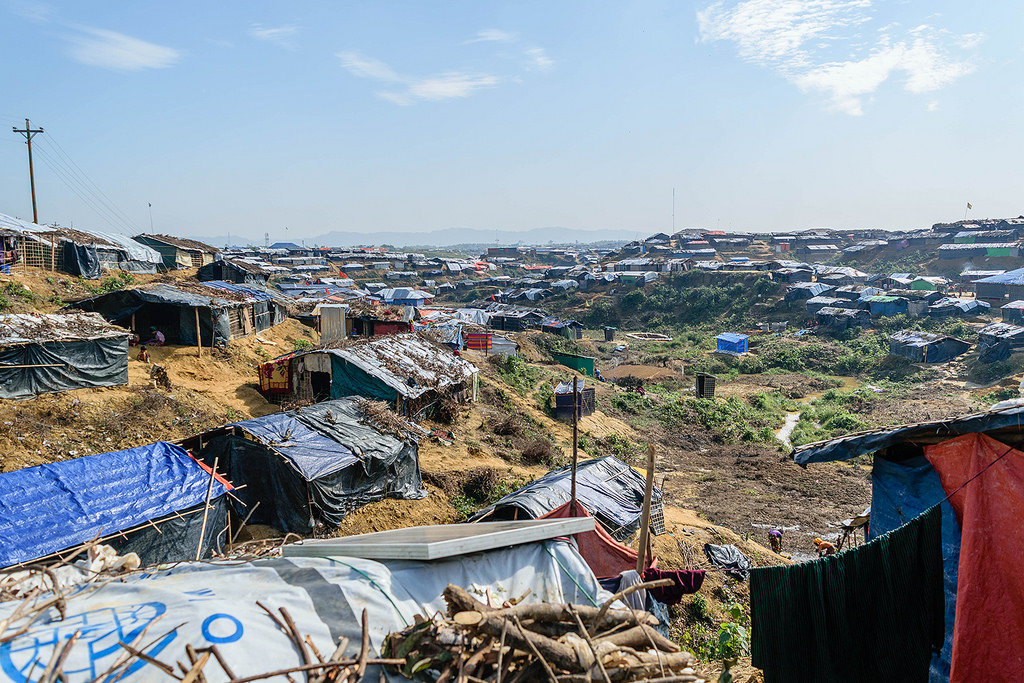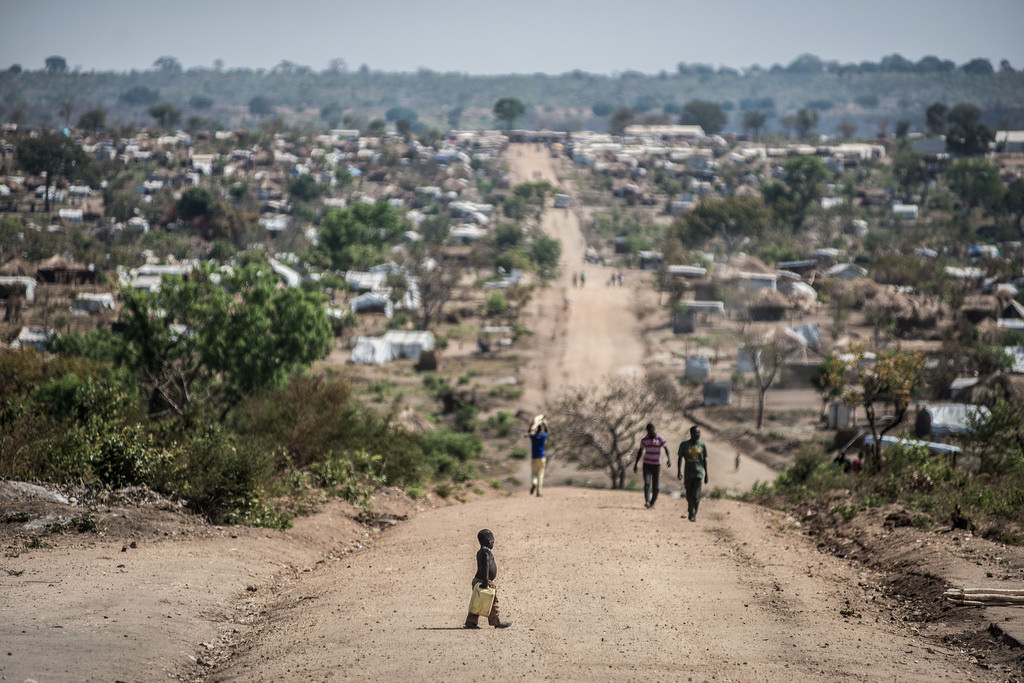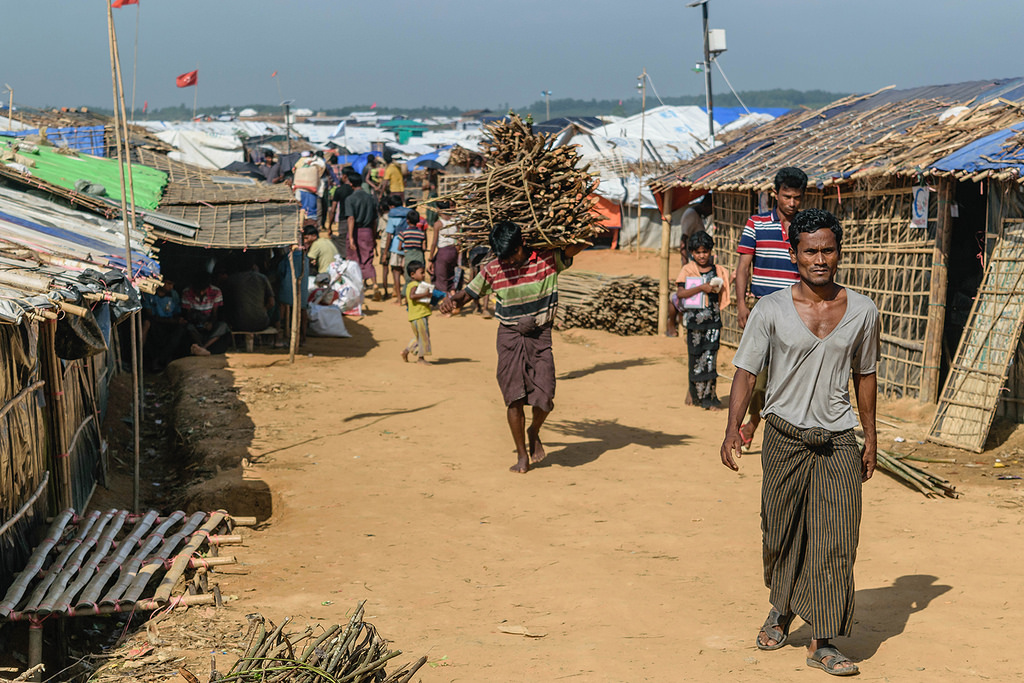The number of people displaced by conflict, violence and disasters has risen to more than 65 million, compared with 37.5 million a decade ago. Many of the displaced live in overflowing camps amid increasingly scarce natural resources.
They often struggle to meet their basic needs, including having enough fuel and energy to cook a meal, power up a lightbulb, stay warm.
About 80 percent of the displaced rely on traditional biomass fuels such as fuelwood and charcoal for cooking and heating. But accessing such biomass is often unsafe and environmentally unsustainable.
Also, most of the staple foods distributed in humanitarian settings – lentils, beans, rice –require considerable time and fuel to cook. To save on firewood, people living in camps often undercook their food, skip meals or sell or barter their food rations.
The Food and Agriculture Organization of the United Nations (FAO) is working with partners on the Safe Access to Fuel and Energy initiative (SAFE) to address people’s energy needs during complex emergencies and protracted crises.
SAFE promotes a combination of energy-efficient technologies and practices, alternative energy sources, including renewables, the planting of trees, as well as opportunities for people to earn a living sustainably.
In the photo: A small child carries a jerrycan of water through Bidi Bidi refugee camp in northern Uganda. Water is one of the biggest challenges for the camp’s inhabitants. Photo Credit: Trocaire
Bidi Bidi refugee settlement in Uganda
Uganda currently hosts over 1 million refugees who have fled from war, drought and famine in neighbouring South Sudan, Burundi and the Democratic Republic of the Congo.
The massive wave of refugees from South Sudan, mostly women and children, has provoked one of the most severe humanitarian crises in Uganda.
The Bidi Bidi settlement, established in Uganda’s Yumbe district in August 2016, quickly became one of the largest refugee-hosting area in the world – equivalent to a new city popping up in six months.
Nearly 300,000 refugees live in the camp, which is more than half of the population in Yumbe.
This rapid influx has put a huge strain on the area’s natural resources on which both the refugees and host communities depend.
As more trees are cut down, women and children have to trek longer distances – sometimes up to 5 km – to collect the fuelwood needed to cook food and boil water. Doing so increases their risk of being attacked by wildlife, harassed, kidnapped or sexually assaulted.
Different scenarios
Using satellite imagery and field data collection, FAO and the UN Refugee Agency (UNHCR) assessed the supply and demand of fuelwood in Bidi Bidi. (report can be found here)
They estimated that the current refugee population consumes about 347,000 tonnes of fuelwood each year for cooking and heating.
More than half of the families in Bidi Bidi still use the traditional three-stone fire for cooking – usually in poorly ventilated spaces, increasing the dangers of smoke inhalation.
In the photo: SAFE assessment in Muna Garage. A woman starts a fire in her mudstove in order to boil water. Photo credit: ©FAO/Andreas Thulstrup.
According to the study, with no action taken, the aboveground biomass currently available in the camp would be depleted within three years.
By introducing more fuel-efficient cook stoves, the study found that annual demand for fuelwood would drop to 243,000 tonnes, with enough biomass to last four years.
A third scenario shows that combining improved cook stoves with the planting of fast-growing trees on 9,000 to 12,000 hectares (12 to 15 percent of the total land area of the Bidi Bidi settlement) would provide a sustainable source of fuelwood for the camp’s population.
Another study – an impact evaluation carried out on the World Food Programme’s (WFP) SAFE interventions in Darfur – found that the 350,000 households using fuel-efficient stoves consume up to 40 percent less fuelwood per household compared to the traditional and inefficient three stone fire system.
Building resilience
Although camps are intended to be temporary settlements, in reality many of the displaced end up living in them for 10 or 20 years – sometimes longer.
“Reducing the high demand for fuelwood in settlements and ensuring the most vulnerable have access to energy and clean technologies require a combination of interventions,” said Arturo Gianvenuti, an FAO forestry and wood energy specialist and one of the authors of the FAO and UNHCR study.
This includes promoting fuel-saving stoves and practices, such as the use of heat retention boxes, the use of lids to prevent steam loss, the soaking of beans to reduce cooking time and drying fuelwood before use to increase cooking energy efficiency. The improved stoves also reduce air pollution and the risk of respiratory illnesses.
The use of alternative fuels, such as LPG and briquettes made from agricultural residues, could help cut down on fuelwood needs. Planning of forest resources in this context is crucial for building resilience and enabling sustainable development in both refugee and host communities., Well-planned forestry interventions can ensure a sustainable supply of wood fuel, timber and non-wood forest products helping to ensure the well-being of the most vulnerable people.
In the photo: Returning home after collecting wood. Kutupalong Refugee Camp, Cox’s Bazar, Bangladesh – A Rohingya man returns home after collecting wood from forests located around 5 to 8 km from the camps. Men and children mostly leave very early to walk to the forest to avoid the hottest hours of the day. Photo credit: ©FAO/Sergio Rivero
Coordination is key
The steady stream of Rohingya refugees into the Cox’s Bazaar district of Bangladesh has become one of the world’s fastest-growing humanitarian crises.
Hundreds of thousands of people face a severe shortage of cooking fuel, leading to environmental, protection, nutrition and health concerns and tensions with the host communities.
“On average 1 kg of fuelwood per person is required every day for cooking, which corresponds to 800 tonnes of fuelwood per day for the Rohingya refugees in the camps. This means that forest covering an area roughly the size of five football fields is cut every day for fuelwood,” FAO Forestry Officer Zuzhang Xia said.
“When you think of the sheer number of people coming at the same time, living in a very small location and harvesting firewood from the surrounding areas to meet their daily energy needs, it’s just not sustainable – not even for a couple of weeks,” added Daphne Carliez, WFP’s SAFE Global Coordinator.
FAO, WFP and the International Organization for Migration are developing a three-year programme to address the immediate and longer-term needs of the refugees and host communities in Bangladesh, exploring a combination of activities to safely access cooking fuel and energy, improve food security and address environmental degradation.
For example, they are looking at LPG cylinders and gas burners, the use of communal cooking areas, the production of rice husk briquettes and the rehabilitation of badly degraded lands in collaboration with Bangladesh’s Ministry of Environment and Forestry.
“A coordinated, holistic approach is essential from the onset. If left unaddressed, these energy access issues can have very devastating consequences in a very short amount of time,” Carliez said.
FAO currently co-chairs the SAFE Humanitarian Working Group with WFP and the Global Alliance for Clean Cookstoves to ensure a more coordinated, effective and timely response to people’s energy needs in humanitarian settings.
Cover Image: New sections of the expanding Kutupalong camp. Kutupalong Refugee Camp, Cox’s Bazar, Bangladesh – New sections of the expanding Kutupalong camp. These hilly areas were uninhabited prior to the new refugee influx that began in August 2017. Since 25 August, more than 621 000 new people have arrived from neighbouring Myanmar (ISCG Situation report 19 November 2017). Photo credit: ©FAO/Sergio Rivero












